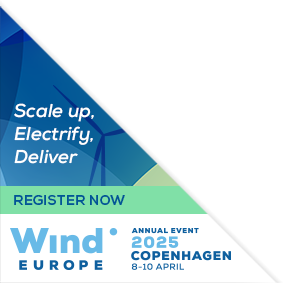Posters
Siblings:
ProceedingsProgrammeSpeakersPostersContent PartnersPowering the FutureMarkets TheatreResearch & Innovation in actionStudent programmePresenters dashboardCome meet the poster presenters to ask them questions and discuss their work
We would like to invite you to come and see the posters at our upcoming conference. The posters will showcase a diverse range of research topics, and will give delegates an opportunity to engage with the authors and learn more about their work. Whether you are a seasoned researcher or simply curious about the latest developments in your field, we believe that the posters will offer something of interest to everyone. So please join us at the conference and take advantage of this opportunity to learn and engage with your peers in the academic community. We look forward to seeing you there!

PO151: Cost - optimized configuration of a dedicated wind farm - hydrogen production project
Anna Guell Pequerul, Senior Process Consultant, OWC
Abstract
Hydrogen is becoming an important alternative route to markets for renewable resources including wind. A report by the World Bank presents that financing renewable hydrogen globally ramping up to 2030 will need $150bn/year. However, the complexity and high capital investment of green hydrogen production are very sensitive to various risks in project development and other stages. In this work, we present a cost - optimized configuration of a dedicated (off-grid) offshore wind farm (OWF) - hydrogen production system in the North Sea, East Scotland. The OWF site is 35 kilometers offshore the Inverbervie town with water depth between 50 to 65 m. The mean wind speed is 10.05 m/s. The OWF is designed to host 42 x Haliade-X 12 MW turbines with fixed-bottom foundations and made up 504 MW rated capacity. In the hydrogen production plant, the electrolysers are assumed to run solely on the generated power from the OWF. PEM electrolyser technology is selected due to its wider power operating range compared with other technologies. The rated capacity (size) of the electrolyser is an important factor that will significantly impact the initial investment, O&M cost and the annual revenue from selling produced hydrogen. Increasing the electrolyser size up to OWF size might increase the amount of hydrogen; however, it will also bring up the investment and operation costs. Whereas, reducing the electrolyser size considerably may result in excessive curtailment. Hence, we have optimized the electrolyser size for the lowest cost of hydrogen (LCOH), and obtained 452 MW. The resulted levelised costs of hydrogen are US$2.79/kg in 2035, US$2.70/kg in 2040, and US$2.16/kg in 2050. We also compared the LCOH of hydrogen produced from dedicated solar PV farms and from combined power generation of wind and solar PV farms.










